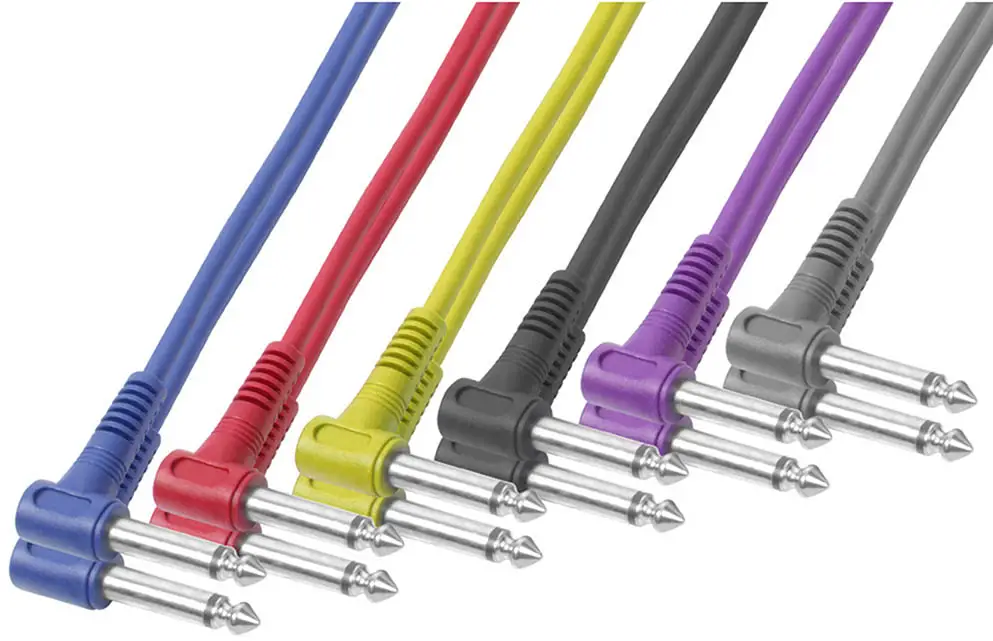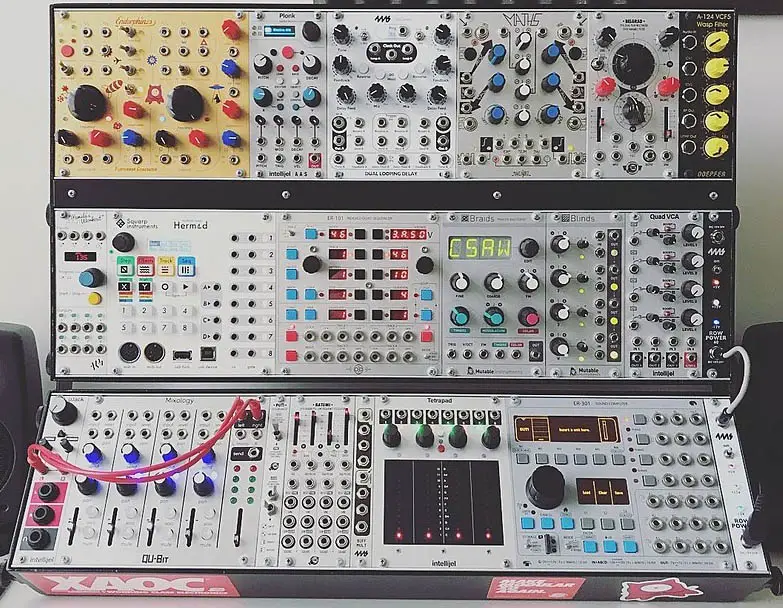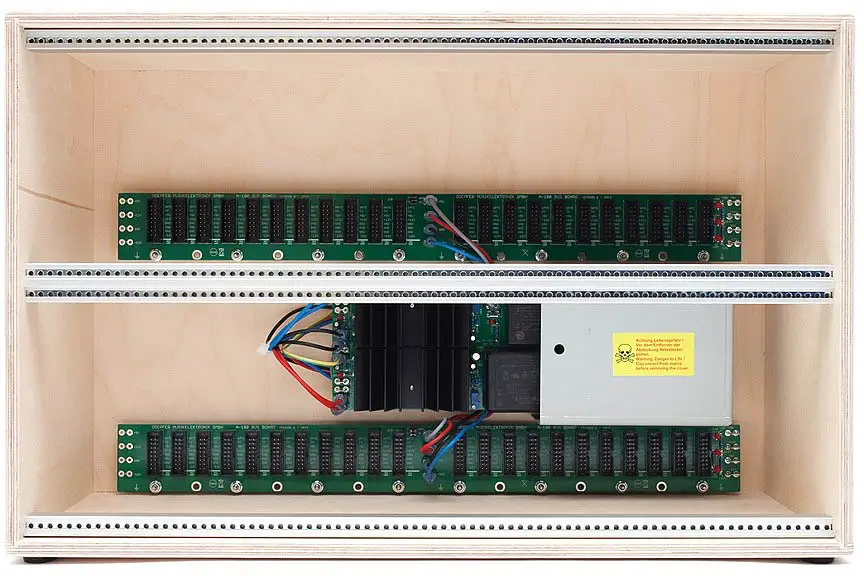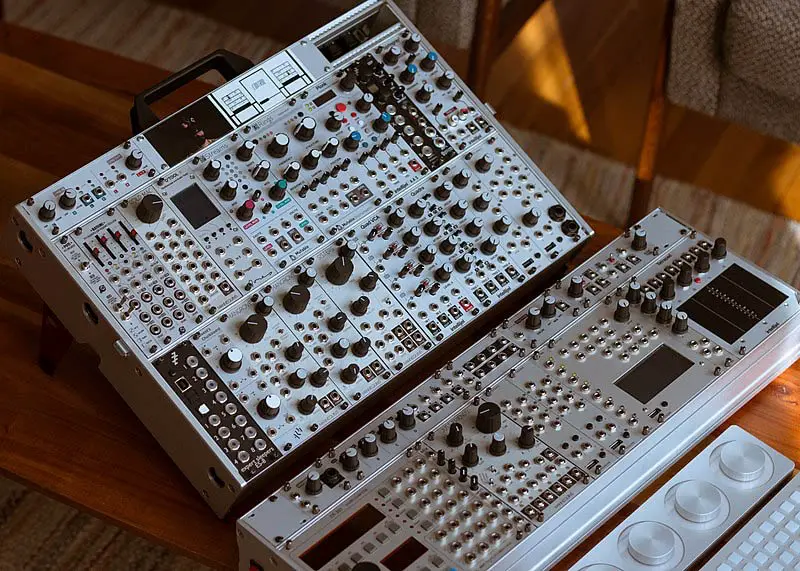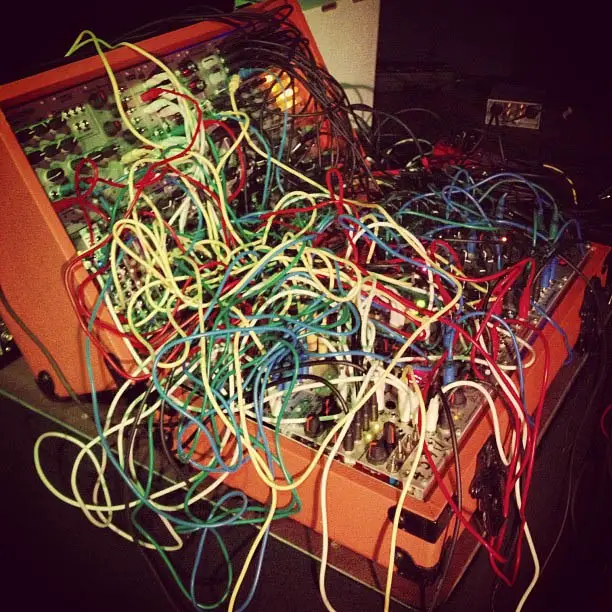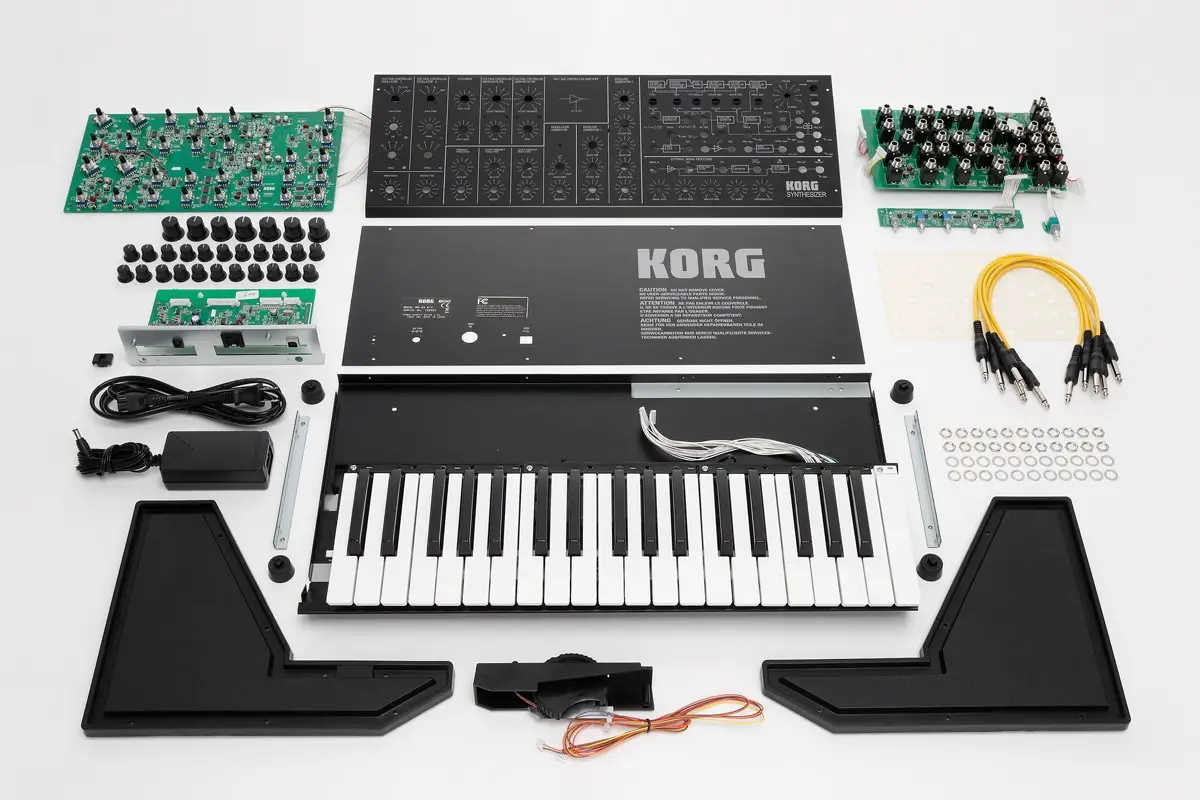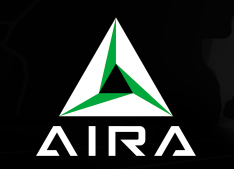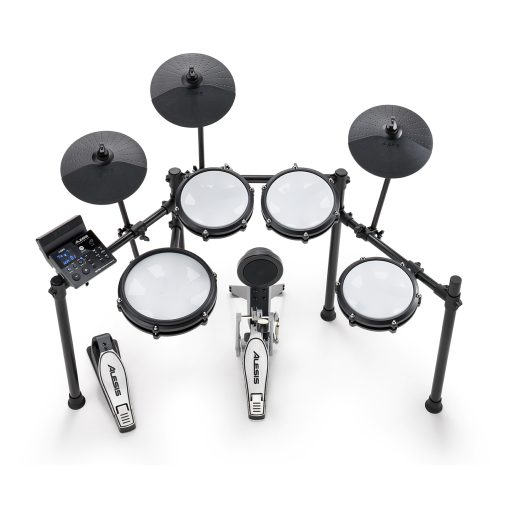Read the specifications on modules, synths and other electronic instruments and soon enough you will come across the term “Eurorack” and then some mention of units, modules and connectivity.
What exactly is Eurorack and why is it popular particularly amongst electronic and synth musicians?
What is Eurorack?
Eurorack is a modular synthesizer format and standard that allows users to create custom synthesizer systems by combining different modules that generate and manipulate electronic signals. Eurorack modules typically consist of various types of analog and digital signal processors, such as oscillators, filters, envelopes, sequencers, and effects.
The Eurorack format is characterized by a standardized module size and power supply, which allows modules from different manufacturers to be easily combined and used together. Eurorack modules are typically designed to be mounted in a rack or case, and interconnected using patch cables to route signals between modules.
Eurorack has gained popularity in recent years among electronic musicians and sound designers due to its flexibility, modularity, and ability to create unique and complex sounds.
How does Eurorack work?
Eurorack works by combining individual modules that generate and manipulate electronic signals, which can then be connected together using patch cables to create a custom synthesizer system.
Each module performs a specific function, such as generating a waveform, filtering a signal, shaping an envelope, or sequencing a pattern. The modules are designed to be compatible with the Eurorack format, which means they have a standard size and power requirements, and can be easily mounted in a compatible case or rack.
To create a sound using Eurorack, the user typically starts by connecting a sound source module, such as an oscillator, to an output module, such as a mixer or amplifier. The user can then add additional modules, such as filters, envelopes, and effects, to shape and modify the sound.
Patch cables are used to connect the output of one module to the input of another module, allowing signals to be routed between modules and manipulated in various ways. The user can experiment with different signal paths and combinations of modules to create unique and complex sounds.
Eurorack synthesizers are highly customizable and modular, which means that users can swap out or add new modules to create different sounds and signal paths. This flexibility makes Eurorack a popular choice among electronic musicians, sound designers, and other enthusiasts who enjoy exploring the creative possibilities of modular synthesis.
Does Eurorack have disadvantages?
There are some potential disadvantages to using Eurorack as a modular synthesizer format.
First, Eurorack can be a relatively expensive hobby, as each module can be quite expensive and the cost of building a complete system can quickly add up. Additionally, as there are many different manufacturers and module designs, it can be difficult to navigate the wide range of options and choose modules that will work well together.
Second, Eurorack systems can be complex and require a certain level of technical knowledge to set up and use effectively. Users need to understand basic principles of electronic circuitry and be able to troubleshoot problems that may arise. Additionally, as there are no pre-defined signal paths or presets, users need to have a good understanding of sound synthesis and be willing to experiment with different signal routings and combinations of modules.
Finally, Eurorack systems can be physically large and heavy, especially when multiple modules are combined into a single system. This can make it difficult to transport and perform with, especially when compared to more compact and portable synthesizers.
Despite these potential disadvantages, Eurorack remains a popular choice among electronic musicians and sound designers who value the flexibility and creativity afforded by modular synthesis.
Is Eurorack dangerous?
When used properly and in accordance with manufacturers’ guidelines, Eurorack is generally safe to use. However, there are some potential safety concerns that users should be aware of.
First, Eurorack modules typically operate at low voltages, but they can still pose a risk of electric shock if not handled properly. Users should avoid touching exposed circuitry or other electrical components while the system is powered on, and should take care when connecting or disconnecting cables to avoid accidental contact.
Second, Eurorack modules can generate high levels of audio output, which can potentially damage hearing if the user is exposed to the sound for extended periods of time. Users should take care to use hearing protection when working with loud or prolonged audio signals.
Finally, as with any electronic equipment, there is a risk of fire or other hazards if the system is not properly maintained or if faulty components are used. Users should follow manufacturers’ guidelines for installation, use, and maintenance, and should take care to use high-quality components and cables to avoid potential safety issues.
Overall, while there are some potential safety concerns associated with Eurorack, these risks can be mitigated through proper use and maintenance. As with any piece of electronic equipment, users should take care to follow best practices for safety and maintenance to ensure a safe and enjoyable experience.
Which manufacturers make Eurorack modules?
There are many different manufacturers that produce Eurorack modules, ranging from small boutique makers to larger companies that specialize in synthesizers and audio equipment. Some of the most well-known Eurorack manufacturers include:
- Doepfer – a German company that is widely regarded as one of the pioneers of Eurorack, and produces a wide range of modules including oscillators, filters, sequencers, and more.
- Mutable Instruments – a French company that specializes in digital modules, including wavetable oscillators, granular processors, and other advanced synthesis techniques.
- Make Noise – a US-based company that produces a wide range of innovative and experimental modules, including complex oscillators, noise generators, and modulation sources.
- Intellijel – a Canadian company that produces a variety of modules, including sequencers, filters, and effects, and is known for their high-quality designs and user-friendly interfaces.
- Expert Sleepers – a UK-based company that specializes in modules that interface with computer software, allowing for advanced control and integration with digital audio workstations.
- TipTop Audio – a US-based company that produces a wide range of modules, including drum machines, effects, and sequencers, and is known for their high-quality sound and innovative designs.
Do any notable artists use Eurorack?
Eurorack is used by a diverse range of electronic musicians, sound designers, and artists who are interested in creating unique and custom synthesizer systems.
Many notable musicians and producers use Eurorack as part of their music-making setup, including Aphex Twin, Richard Devine, Surgeon, Deadmau5, and Alessandro Cortini of Nine Inch Nails. Eurorack has been used to create a wide range of electronic music styles, from ambient and experimental to techno and dance music.
In addition to musicians, Eurorack is also used by sound designers and artists for installations, performances, and other creative projects. Eurorack can be used to create complex and evolving soundscapes, generative music, and interactive installations that respond to user input or environmental factors.
Eurorack has also gained a following among DIY electronics enthusiasts who enjoy building and customizing their own synthesizer modules, or modifying existing modules to suit their specific needs. The modular nature of Eurorack makes it possible to experiment with different circuit designs and signal paths, allowing for a high degree of customization and experimentation.
